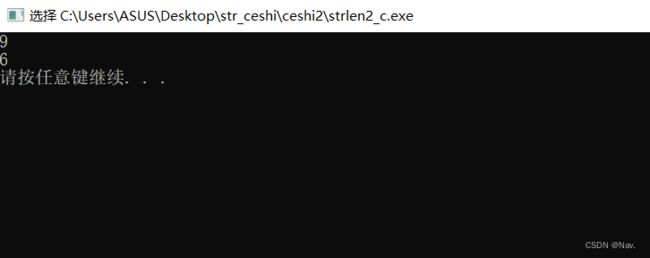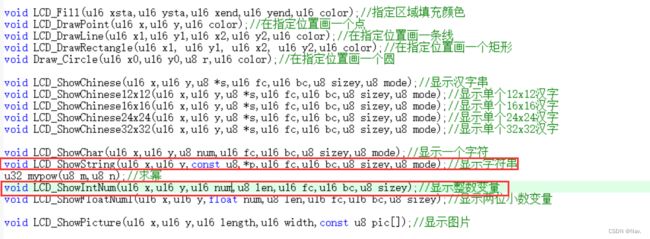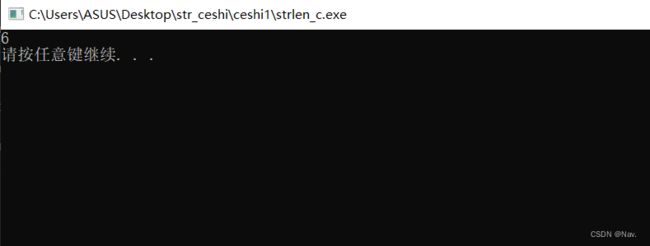C语言中常用的字符串函数(strlen、sizeof、sscanf、sprintf、strcpy)
C语言中常用的字符串函数
文章目录
- C语言中常用的字符串函数
-
- 1 strlen函数
- 2 sizeof函数
-
- 2.1 sizeof介绍
- 2.2 sizeof用法
- 3 sscanf函数
-
- 3.1 sscanf介绍
- 3.2 sscanf用法
- 3.3 sscanf高级用法
- 4 sprintf函数
-
- 4.1 背景
- 4.2 sprintf用法
- 5 strcpy函数
-
- 5.1 strcpy介绍
- 5.1 strcpy用法
1 strlen函数
strlen即为string length,顾名思义该函数是用来求字符串长度的。在介绍strlen函数之前,我们要先介绍一下"\0"这个转义字符。任何一个字符串后面都会隐藏一个"\0",该转义字符是字符串结束的标志,所以我们在使用strlen函数求字符串长度时,遇到"\0"时停止读取,此时"\0"前的字符个数就是字符串的长度。
注意:
这里的"\0"只是结束标志,并不算一个字符!
示例1:
#include 示例2:
在c语言中,字符串并没有作为一种独立的数据类型进行定义。相反,字符串被表示为字符数组或字符指针。以下是两种常见的表示字符串的方法:
- 使用字符数组:
char str[20] = "Hello, World!"; // 声明一个字符数组来存储字符串
- 使用字符指针:
char *str = "Hello, World!"; // 声明一个指向字符的指针,指向字符串常量
接下来我们介绍使用字符数组存储字符串的每一个字符,使用这种定义方式对于strlen的求解有何不同呢?
#include 
arr1数组只是单纯把字符串“abcdef”的每一个字符用数组存储起来,而arr2数组则是多存储了一个“\0",可以看到arr1数组的长度为9,arr2数组的长度为6,接下来我们将展示两个数组在内存中的存储状态。


arr2数组的存储情况和示例1字符串的存储情况相同,而arr1却不同。对于arr2我们不进行说明,接下来我们分析下为什么arr1数组的长度为9。
上文我们说过字符串结束标志为"\0",但是我们的arr1数组没有额外存储"\0",所以编译器在读取时,并不会像我们所期望的那样停止读取,故长度当然不会为6。但是为什么最终读取的长度为9,是因为在读取时,编译器读取完arr1时会继续往后读取,直到读取到”\0",arr1在读取完第9个字符后才会遇到”\0";由于每个人的电脑和编译器不同,读取的长度也不一样,所以arr1这种情况一般我们认为它读取的结果为随机值!
示例3:
#include 示例3是为了进一步说明字符串结束标志"\0"的重要性。
2 sizeof函数
2.1 sizeof介绍
sizeof是计算变量在内存的占空间的大小,单位是字节。
2.2 sizeof用法
- 使用sizeof查看数据类型占空间大小
#include - 使用sizeof计算基本数据类型变量的占用空间的大小
#include - 使用sizeof计算指针的占用空间大小
需要注意的是,32位平台所有类型的指针的占用空间大小都是4个字节,64位平台所有类型的指针占用的空间大小为8个字节,观察如下代码:
#include - 计算数组元素的个数
如想得到数组的元素个数,有以下两种方法:
1.总长度/相对应的数据类型长度
2.总长度/首元素长度
#include 3 sscanf函数
3.1 sscanf介绍
sscanf函数是C语言中的一个标准库函数,用于从格式化的字符串中读取输入。
sscanf的函数原型:
#include 其中,str表示要读取的字符串,format表示格式控制字符串,…表示可变参数列表。
3.2 sscanf用法
- 整形数据转换
#include 
“%04d%02d%02d"是用来解析字符串的格式,%表示格式转换的开始,d表示转换为一个整数,04作为d的修饰,表示这是一个长度为4位的整数,不足4位时以0补齐。
返回值converted等于3,表示有3个数据成功转换,转换成功数目同时取决于被解析的字符串以及其转换格式,如果我们把例子中的格式改为”%04d%02d",那么sscanf将只返回2,day的数值不会被sscanf更改。
- 浮点数转换
#include 
sscanf的格式字符串中,f表示这是一个浮点数,其修饰词l表示这是一个double的浮点数。
3.3 sscanf高级用法
取到指定字符为止:运算符 %[ ]
- 遇到空格为止
#include - 遇到指定字符为止
#include 
我们设定运算符为% [^1] ,即遇到1截止,最终结果也符合预期。
- 取仅包含指定字符集
#include 
[a-z]表示读取a-z的所有字符,[^a-z]表示读取除a-z以外的所有字符 。
- 取到指定字符集为止
#include 4 sprintf函数
4.1 背景
在使用STM32驱动TFT屏幕时,发现厂家给的驱动函数只支持16位无符号整形数据,即可显示的范围为0~65535,那么我们想显示65535以外的数则需要自己写驱动函数,本着偷懒的原则我发现了厂家提供了字符串驱动函数,那么我们只需要将65535以外的数转为字符串进行显示即可。

这便需要使用我们的sprintf函数,sprintf的函数原型:
#include 参数列表:
buffer:char型指针,指向欲写入的字符串地址。
format:char型指针,指向的内存里面存放了格式字符串。
[argument]…:可选参数,可以是任何类型的数据。
返回值:字符串长度(strlen)
4.2 sprintf用法
- 将 %f 格式的数据写入到字符串中
#define _USE_MATH_DEFINES 1 //如果要使用里面的宏,需要定义_USE_MATH_DEFINES
#include - 字符串写入字符串中
#include - 多个格式的写入
#include - 观察函数的返回值
sprintf函数的返回值不包含目标字符串末尾自动添加的’\0’
#include - 指定起始目标字符串地址
当你想要在一个字符数组的某个位置开始时,那么第一个参数就要传对应位置的地址。
#include - 格式化字符数组
#include - 字符串的拼接
#include - 数字转换成字符串
#include 
在这里我们将655350转化为字符串。可以看出,利用sprinrf函数可以解决我们背景中的问题。
5 strcpy函数
5.1 strcpy介绍
strcpy函数是将一个字符串复制到另一块空间地址中的函数,‘\0’是停止拷贝的终止条件,同时也会将 ‘\0’ 也复制到目标空间。
strcpy的函数原型:
#include 函数的参数:
- char *dest------------目标字符串的首地址
- const char *src------源地址:被复制的字符串的首地址,用const修饰,避免修改掉被拷贝的字符串
函数的返回值类型:
- char*:返回的是目标字符串的首地址
5.1 strcpy用法
#include 















